REMARKER REFLECTIONS



Every week, students from all 12 grades pray, listen to sermons and sing hymns in the school’s center of religious and spiritual learning: the chapel.
For any institution that puts itself forward as culturally egalitarian, two options are available when it comes to the matter of religion: either the institution can forgo religion altogether or attempt to equally embrace every religion at once.
St. Mark’s, being no exception to this rule, has firmly settled itself in the latter camp. On campus, weekly chapel services feature sermons consisting of a variety of religious or unspecifically “spiritual” themes, Judeo-Christian prayers and hymns and occasional interfaith observances for holidays such as Diwali and Yom Kippur.
Despite the school’s efforts to embrace religious diversity, certain parts of the St. Mark’s experience continue to leave some with a sense that education at the school has certain Christian elements, per a poll sent to Upper and Middle School students by The ReMarker which received more than 200 responses. Examples of this include an Episocopalian chaplain, stained glass windows in the chapel depicting scenes from the New Testament and a metal cross behind the Chapel’s pulpit.
In addition to this conflict between the school’s quest for religious diversity and Christian traditions, the completely
secular nature of the rest of the curriculum leaves others wondering why mandatory chapel services are a part of the school at all.
With these inconsistencies, several questions emerge: Why does the school value spirituality? What does it mean to be nonsectarian? Do elements of the school’s past hinder the full potential for students’ spiritual growth?
e story of religion at the school is best understood by beginning before the school’s founding — during a religious disagreement between the school’s two predecessors.
“The direct predecessor schools were the Cathedral School, founded in 1946, and the Texas Country Day School, founded in 1933,” English and history instructor Dr. John Perryman said. “The Cathedral School was located at St. Matthew's Cathedral, which is the Episcopal cathedral in Dallas just northeast of downtown, and Texas Country Day had no religious affiliation.”
The consolidation of a religious school with a secular one gave birth to a unique environment.
“The merger produced an institution that had a strong element of spirituality,” Headmaster David Dini said. “The chapel retains certain historical elements that are so crucial to tradition and continuity over time that we value here. We’re not going to deny that heritage. At the same time, the merger created a setting that was inclusive to a wide array of perspectives when it came to religiosity and spirituality.”
During the merger, The Cathedral School fought hard to retain many religious components. While some of these have died out over time, some clearly remain, most notably the school’s name itself.
“The two candidates for the new school’s name were St. James’ and St. Mark’s,” Perryman said. “The Cathedral School decided that the name was one aspect of
the cathedral inheritance that they wanted to consider keeping, and they opted for St. Mark’s.”

Now, as the school strives to become increasingly diverse and representative, a possibility remains that the name St. Mark’s could be misconstrued. The Alcuin School, just down the road, addressed this in 2013, when it altered its original name — St. Alcuin.
“As an international school and community, we value the education of all religions and perspectives,” Alcuin Head of School Walter Sorensen said. “The school changed its name from St. Alcuin to Alcuin to more accurately reflect the school’s diverse community and its dedication to including students from all faiths and belief systems.”
Sorenson — who led the initiative to change the school’s name — saw it as a problem for two reasons.
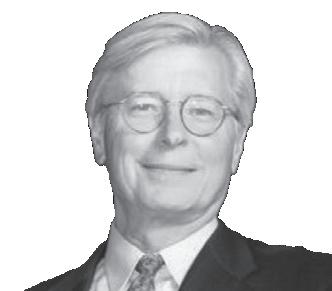

“Firstly, it falsely identified us,” Sorenson said. “We are a nonsectarian school, and the name carried certain religious connotations. Secondly, it was an inhibitor for us. Many families would not apply or even look here because they didn’t want their children to attend what they thought was a religious school. The name was preventive for becoming a more diverse program, which is in essence what we all need to be doing as independent schools.”
Largely because of the school’s name, Dini has had to deal with inquiries regarding the school’s religious and spiritual status.
“Certainly, the name St. Mark's may have certain religious connotations and may push people to conclusions without fully knowing the school,” Dini said. “There’s a St. Mark Catholic School in Plano; I’ve had people ask me if St. Mark’s is also a Catholic school. My goal is for people to understand the school and to associate it with a place of excellence and a valuesoriented environment.”
Student ambassadors, including Lion and Sword Society Co-President senior Aadi Khasgiwala, have also received similar questions.
The St. Mark’s Choir of Men and Boys sings many Anglican works and perform many services such as Evensong, Festival of Lessons and Carols and Baccalaureate.
In addition, the choir has been affiliated with Royal School of Church Music since 1951. This allows the singers to be awarded for their efforts and continue to perform at a high level.
Given the school’s diverse student body, the choir’s focus on Anglican songs and performances are executed by a diverse group of students who don’t all practice the Christian religion.
For sixth-grader Ishaan Siddamshetty, following the Hindu religion while also being a part of the choir is a new environment for him, but Siddamshetty embraces his role.
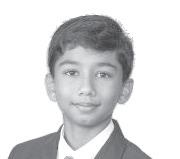
“Choir is about spreading stories of Christianity,” Siddamshetty said, “but there’s no harm in a Hindu going into
a Christian choir, because our goal is to tell a story. The Christian religion may dominate, but it doesn’t really affect me at all.”
Siddamshetty believes the choir is a tight-knit community that focuses more on the experience than its Christian background.
“It’s fun to sing,” Siddamshetty said. “Personally, I don’t really feel awkward because when we are singing in events, I am more focused on my singing. I don’t really have time to focus on the Christian aspect of all the songs.”
religion at St. Mark’s: ‘How often is chapel? Does it preach specifically about Christianity?’”
Following the shift in name, Sorenson witnessed a profound impact.

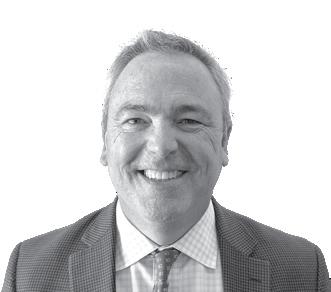
“We have more families here who follow religions from all over who understand what we stand for,” Sorenson said. “Not having an impediment in our name helped us organically in terms of people looking at our school and applying, and it helped our community embrace diversity and want to learn about how other people around the world think.”
While the name St. Mark’s may externally give the school a religious — specifically Christian — image, Rev. Stephen Arbogast asserts that, internally, the school doesn’t promote one religion over another, solidifying itself as a nonsectarian institution.
“The school definitely values religious experience,” Arbogast said. “But it definitely does not say what kind of religious or spiritual tradition you need to follow. So you could be a faithful Hindu, Buddhist, Presbyterian, Baptist, Methodist or anything else.”
Yet, 45 percent of poll respondents believe the school’s approach to religion and spirituality does not align with the definition of nonsectarian.
“Our modern chapel was partly born out of a Christian school,” Dini said. “Inevitably, there are still Christian elements. We have an Episcoplian priest as our chaplain. We have an Anglican choir, which is obviously out of a Christian tradition. Yet, in my mind, our chapel is not an either-or. It’s an inclusive environment. It’s shared and overlapping.”
During chapel services, Arbogast strives to give students opportunities to further themselves spiritually — which can certainly live outside the realm of
of learning how to be quiet, thoughtful and reflective, whether or not that's in the context of prayer, the effort to have a relationship with some kind of divine being or the effort to be more in touch with yourself or with the universe.”
We hope that this book, designed to serve as a vehicle for common prayer in a religiously diverse community, will enrich our worship, give glory to God, unite us in community, and honor and respect the wonderful varieties of faith which come together for worship in St. Mark’s Chapel.
Much of the school’s Christian legacy is evident in the Worship Book used during chapel services. Litanies, prayers, psalms and hymns contain words like “God” or “Lord” or “Almighty,” and many of these orations come straight from the Bible. Several poll respondents say their faith or religion is not included in the various elements of chapel.
“We did not have a worship book until about 30 years ago,” Arbogast said, “and the book that we’ve been using for all those years was largely based upon the Episcopal Church’s Book of Common Prayer and hymnal.”
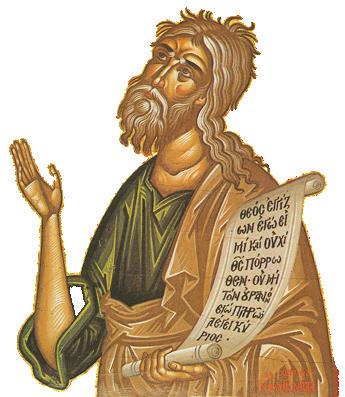
On Nov. 17 — after an approximately five-year long process that entailed reviewing recommendations on music and prayers from members of the school community — Arbogast and a committee of faculty, staff and students released a revised Worship Book for the first time since the last revision in 1998.
According to Arbogast, the impetus to revise the publication was to create a book that would better reflect the school’s religious and cultural diversity.
“The prayers and the music better represent the community here at the school now, as opposed to what the community was like 30 years ago,” Arbogast said. “Now, there are several dozen authors — men, women, Christians, Muslims, Jews, contemporary and historical people.”
Many followers of minority religions in the school’s community are noticing and appreciating this shift. Senior
Arjun Badi, a chapel council co-chair, for instance, applauds the greater degree of diversity in the new worship book while pointing out room for improvement.
“The chapel program — and Father Arbogast in particular — is making great strides to include many religious perspectives in services, such as Hinduism, which I am a devout follower of,” Badi said. “This is a work in progress, however, because there are still many things that may be lost in translation. For example, Hindu prayers in the worship book end in ‘Amen,’ which is unfamiliar to me because that denotes Abrahamic religions in non-Abrahamic prayers.”
ough the school’s relationship with religion has changed a great deal in its past and will likely change in the future, Arbogast asserts that a spiritual education is a vital component in setting boys on the path to manhood.
“Students in grades one through 12 are at a formative time of their lives in which they are thinking about their religious identity,” Arbogast said. “So, part of what we do is help these students make informed decisions about who they want to be in a religious or spiritual context — Because I think that’s part of being a mature, wise, thoughtful adult.”
Dini — who has experienced chapel for nearly three decades — has had the unique opportunity to witness the chapel transform along with the school.
“As the community of the school has widened and become more representative of the world at large,” Dini said, “our chapel program and focus on spirituality have remained at the literal and figurative center of our campus. To me, that’s a blessing.”
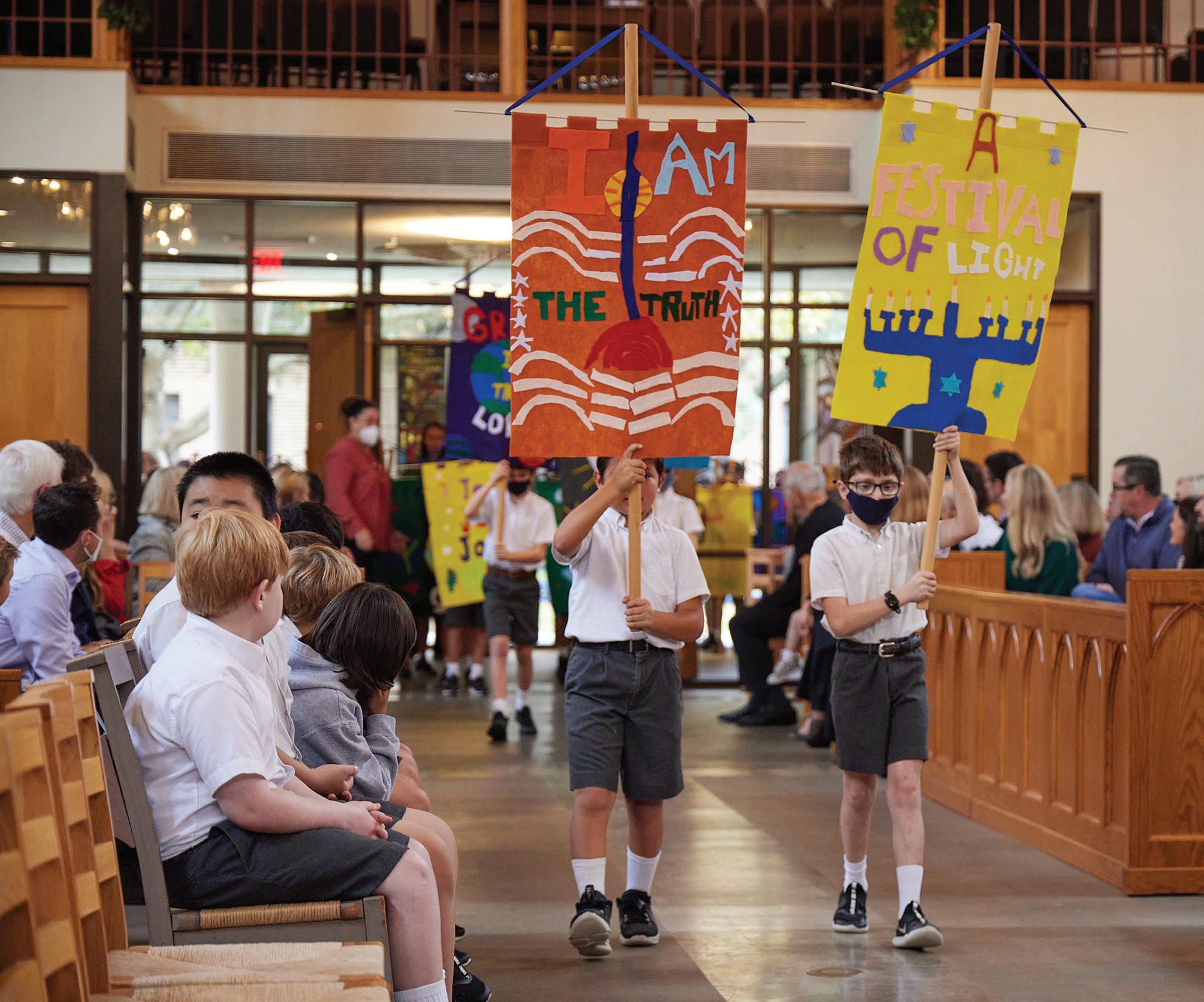
“